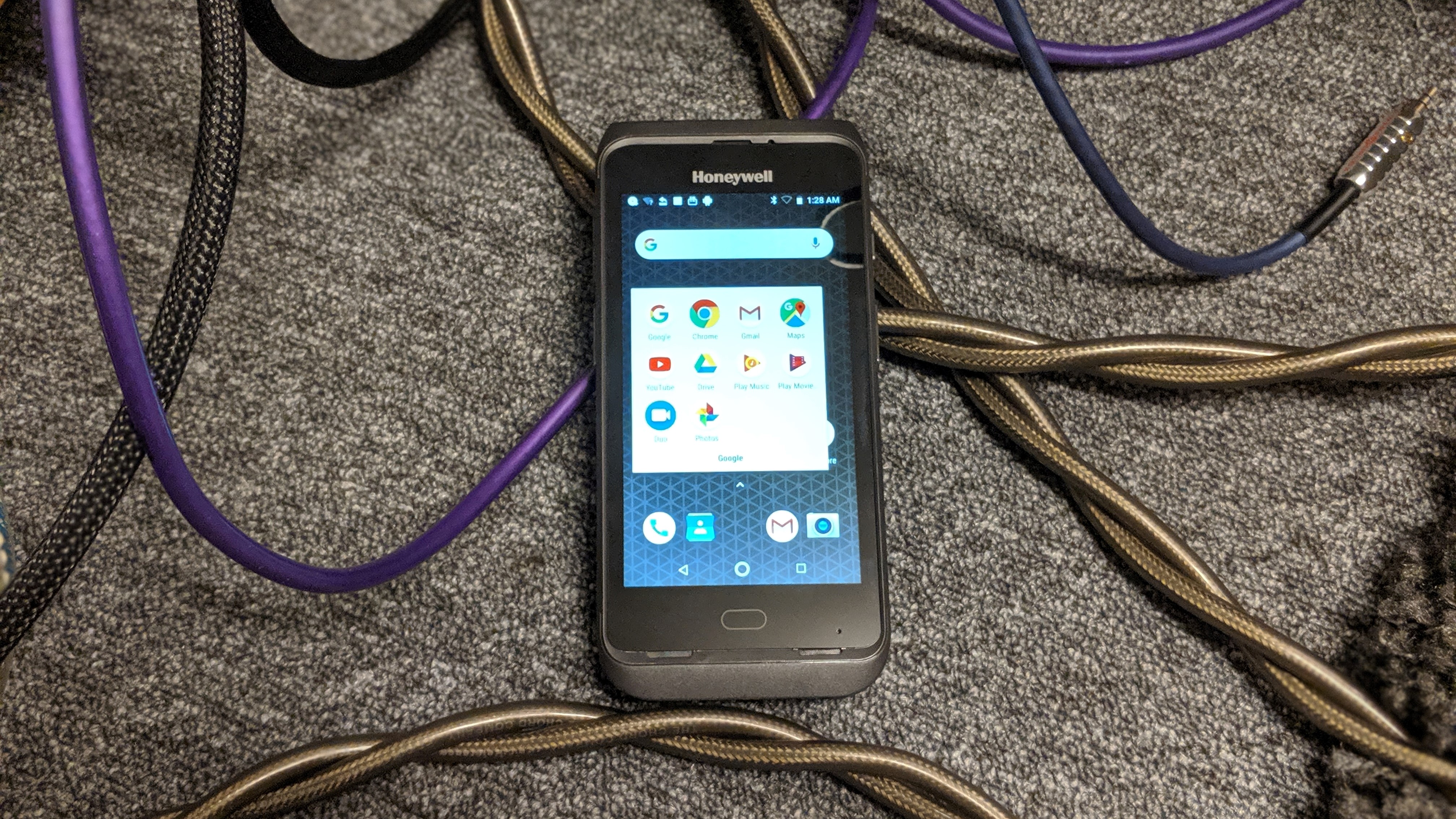TechRadar Verdict
The Honeywell Dolphin CT40 is not your average rugged smartphone. It is kitted with a capable set of components that leverages an existing ecosystem and puts the emphasis on what really matters to most businesses; support and aftersales.
Pros
- +
Wi-Fi only version available
- +
Competitive pricing
- +
Decent set of components
- +
Removable battery
- +
Comprehensive accessories option
Cons
- -
No USB port
- -
No front facing camera
- -
Screen is prone to fingerprints
- -
Only IP64
Why you can trust TechRadar
Ruggedised smartphones usually fall into two categories: the ones that are generic models aimed at outdoor enthusiasts and users that want something solid at an affordable price. A good example of this is the Blackview BV9500 Pro, a versatile rugged handset that’s around $300.
Then there’s the business-focused models, often sold as an entry point to an ecosystem that includes aftersales, peripherals and accessories. The Honeywell Dolphin CT40 is a good example; with a starting price of around $1,100, it is aimed at professionals and field workers that operate within a supply chain where the handset device often only accounts for a tiny portion of the total cost of ownership (TCO).
- Also check out the best rugged tablets of 2019
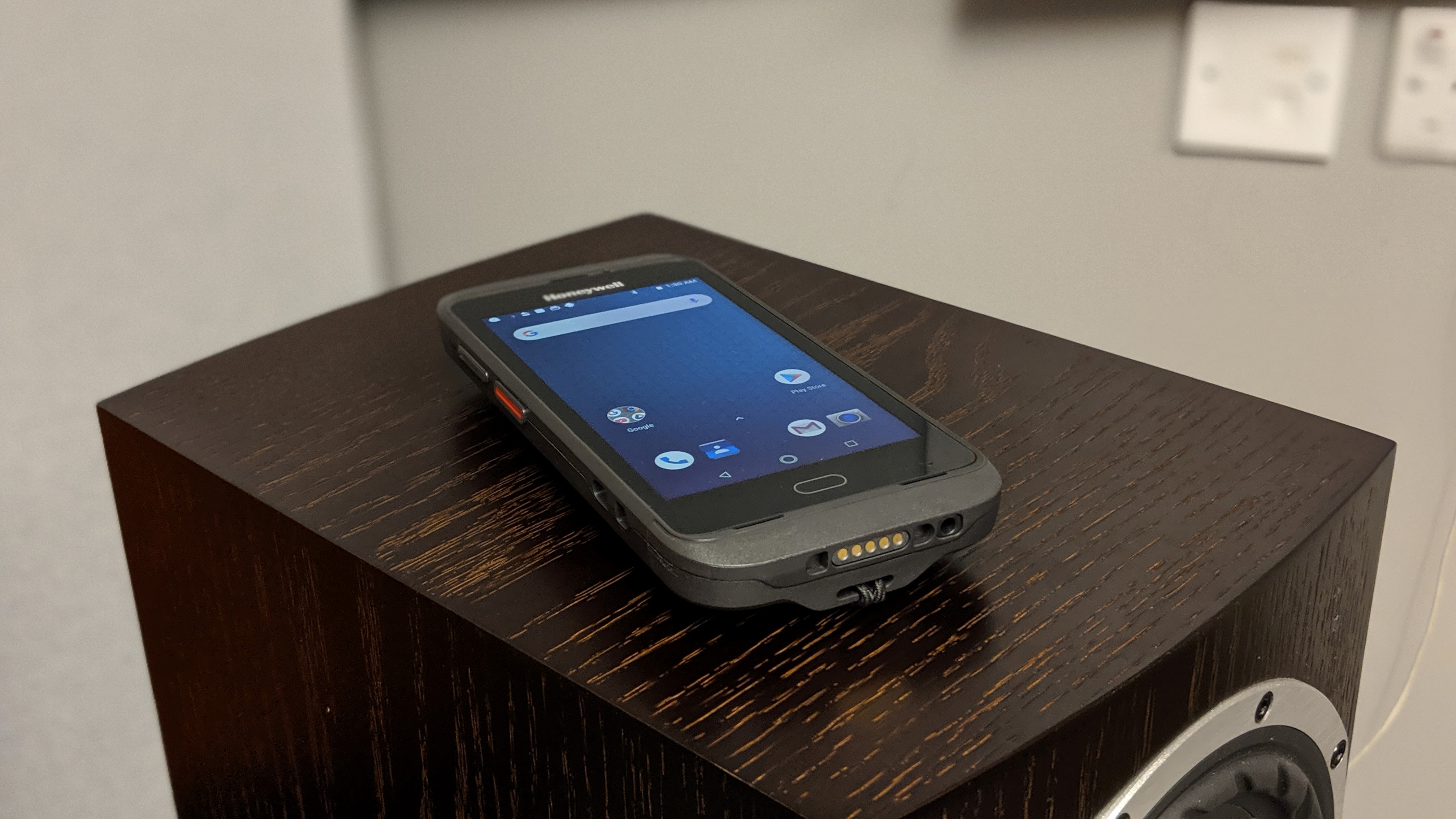
Design
The Dolphin CT40 sticks to a very conventional design ethos; reassuringly heavy (278g), polycarbonate plastic, thick and full of features. Using polycarbonate plastic for the casing means that it is extremely hard and has a matte finish which gives it a “I mean business” look. No wonder that this is a MIL-STD-810G certified device but not IP68; it has only been tested to meet IP64. You can’t immerse it as it is only protected from sprays and splashing of water.
The front screen is covered by a Corning Gorilla Glass 5 panel which will protect it against scratches and falls. Unfortunately, Honeywell didn’t add a coat of oleophobic material, which leaves the display highly prone to greasy fingerprints and affects the general viewing experience.
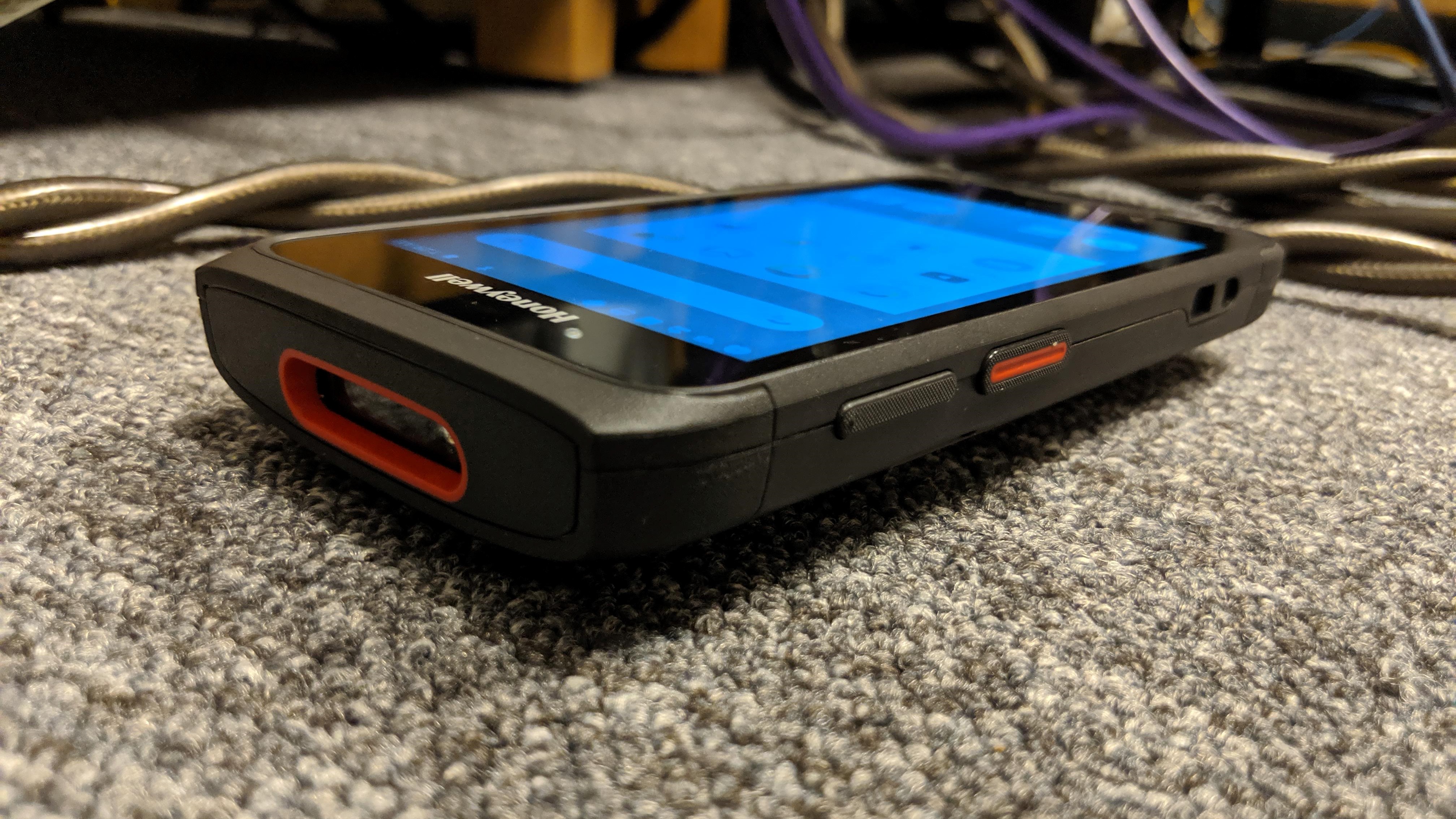
The active portion of the front facia is actually quite small with a diagonal of only five inches thanks to a massive bezel. There’s a button outline that triggers the scanner; it can be reprogrammed into an app quick-launch key. There’s no front-facing camera and while one might argue that it is good riddance because of the gimmicky factor, we can see useful biometric applications in the near future for it.
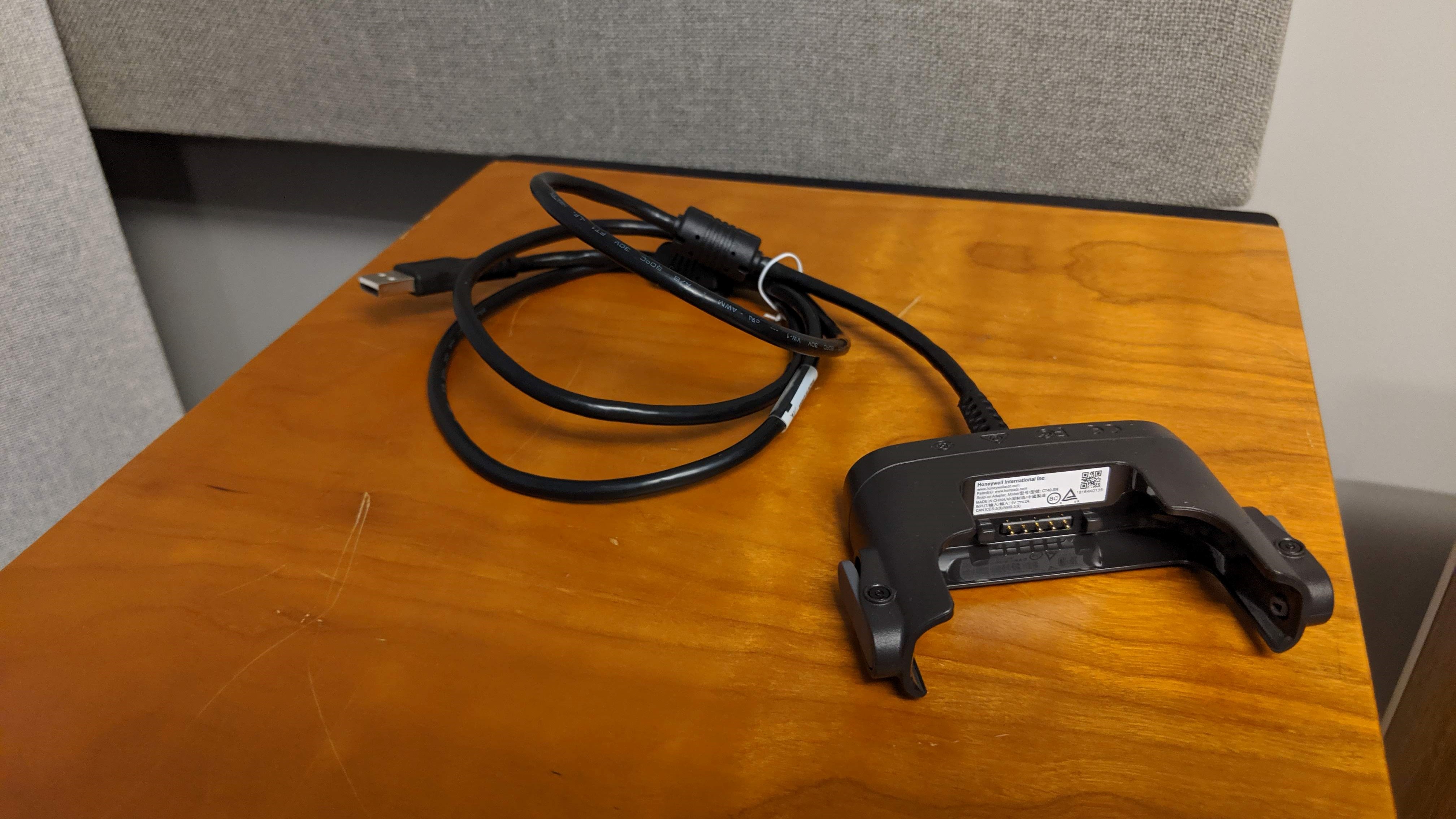
On each side of the CT40 are two notches which are used to secure the device to the proprietary charger. Yes, it uses a proprietary charger which means that it doesn’t have a USB port and you have to carry the charger everywhere you go. Ironically you need to plug that charger into a USB port to get it going.
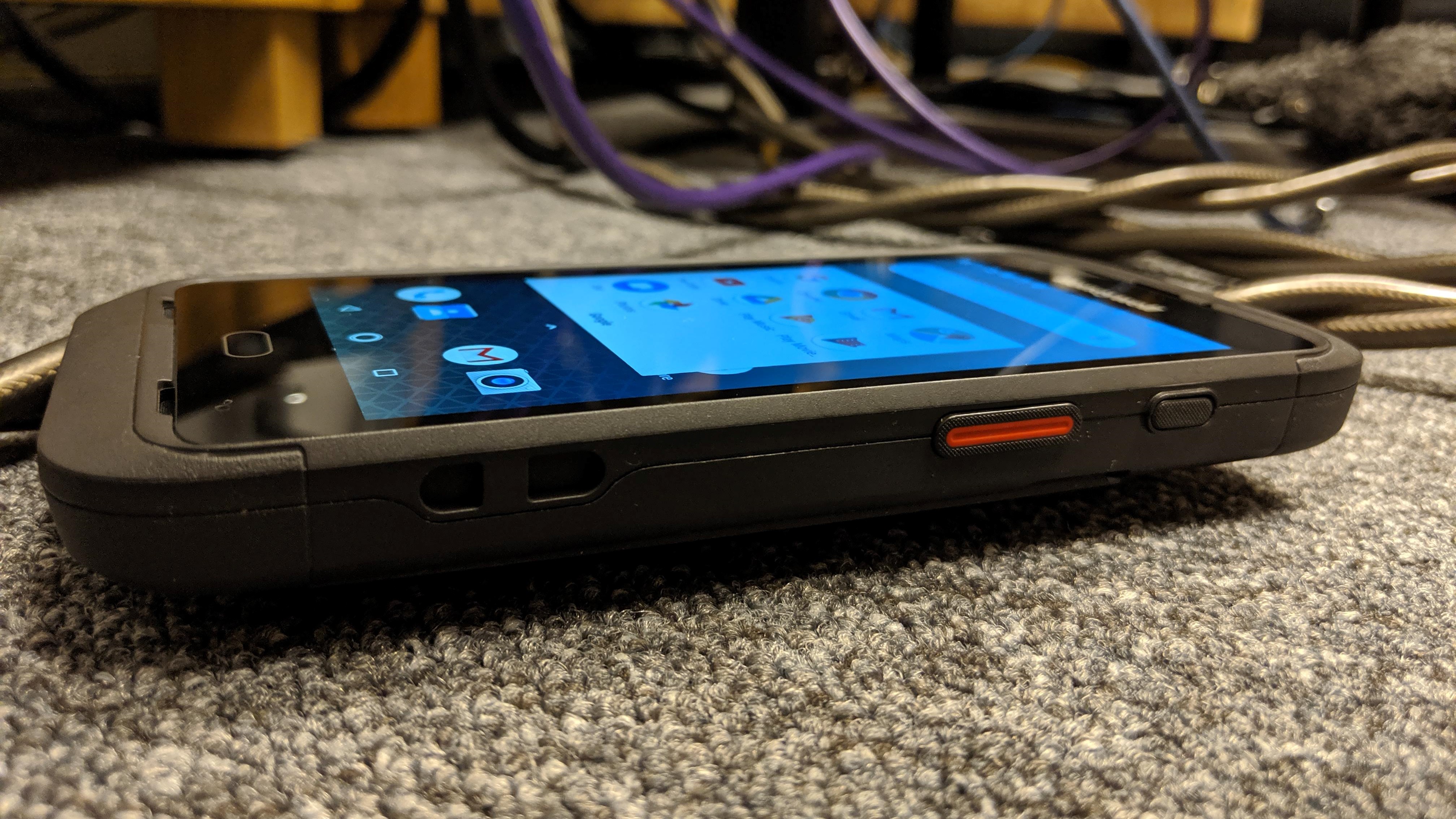
Two elongated red buttons can also be found on each side; they activate the onboard laser scanner, located at the top of the device and explains why it is about 18mm thick. Elsewhere are a volume rocker, an audio port and the power button. The latter is surrounded by a ridge, which makes it more difficult to switch on or off. That’s done on purpose to prevent any accidental power on or off.
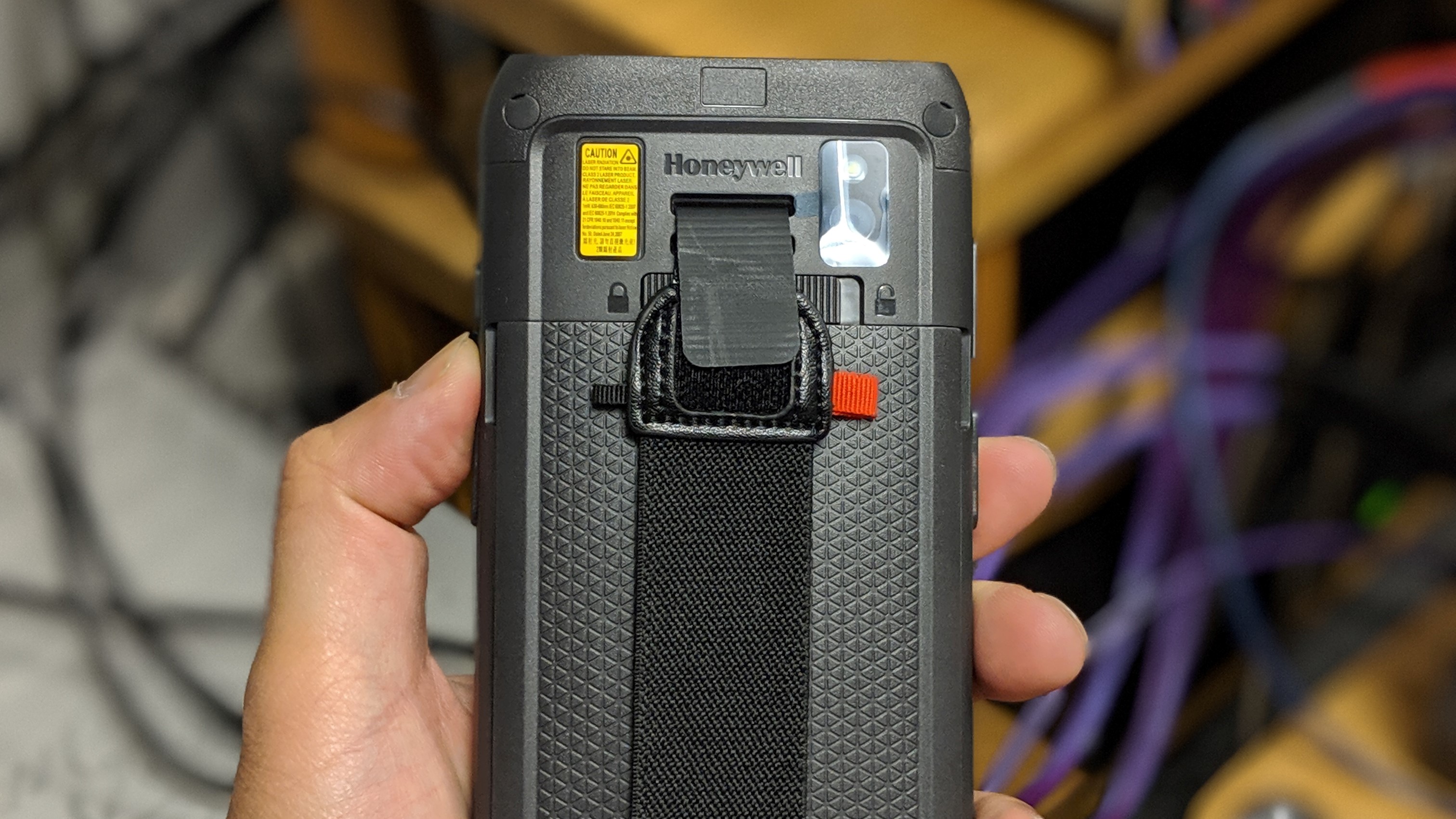
Flip it on the back to find a 13-megapixel camera with a lens and a removable battery with a removable elastic strap/hand strap. A SIM slot and a card reader are located behind the battery. At 162 mm x 77 mm, it has a sizeable footprint comparable to some 6.5-inch smartphones we’ve seen in the past (albeit non rugged ones).
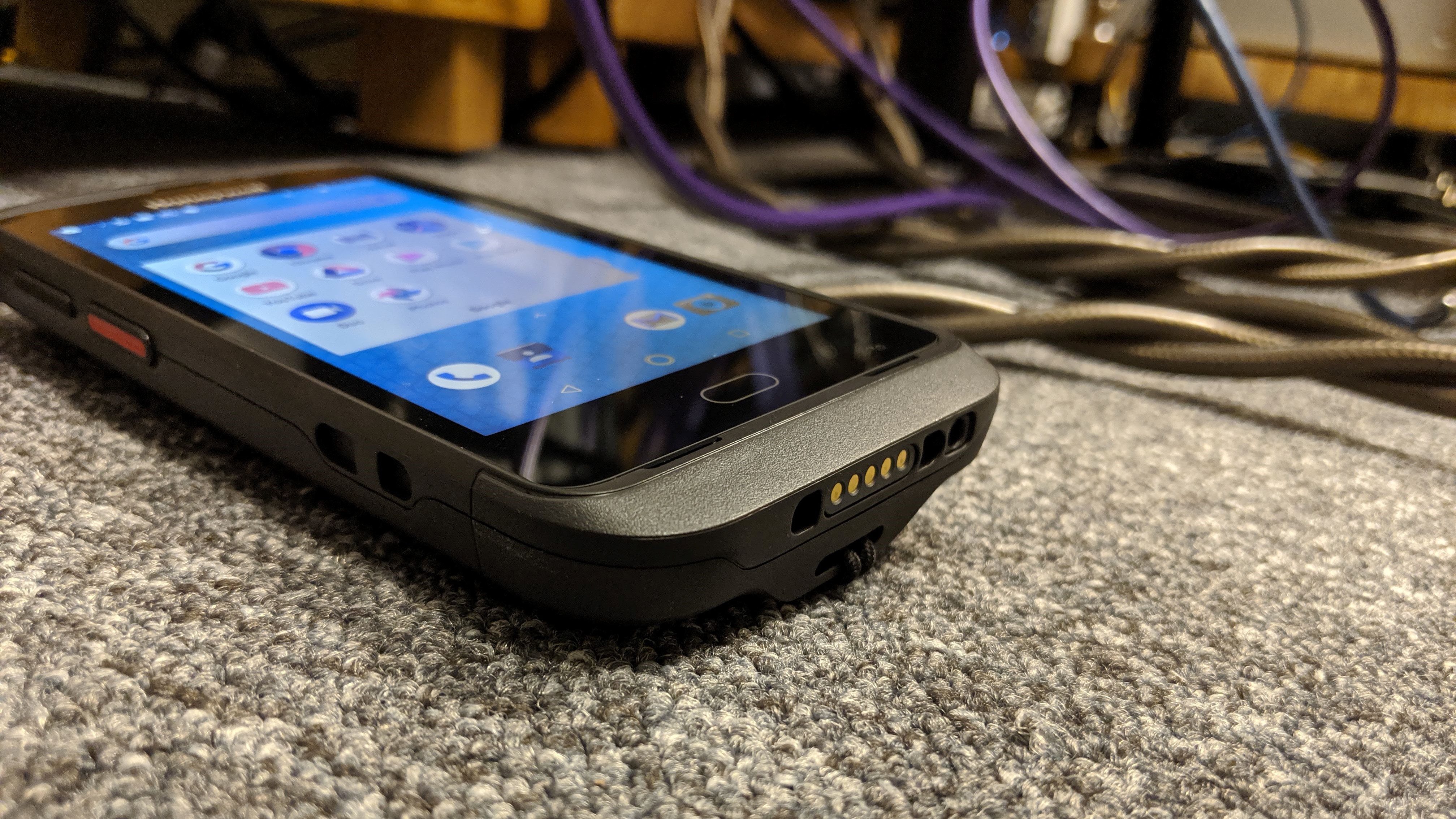
Hardware
The Dolphin CT40 that was shipped to us came with the following hardware:
CPU: QC660
GPU: Kyro 260
RAM: 4GB
Storage: 32GB
Screen size: 5-inch
Resolution: 1280 x 720
Weight: 278g
Dimensions: 162 mm x 77 mm x 18.2 mm
Rear camera: 13MP
Front camera: N/A
OS: Android 8.1
Battery: 4.1Ah
Let’s start with the display. The CT40 uses a 1280 x 720 pixel screen; opting for a low-res display will have a positive impact on performance and given that the device will likely be used with customized apps, a HD resolution shouldn’t be an issue.
Honeywell opted for a Qualcomm Snapdragon 660 chip with 4GB of RAM and 32GB of onboard storage - which should last it enough till Android circa 2022. There’s a 4.1Ah battery with a claimed 12 hours battery life. The scanner is one of Honeywell’s own.
Wireless connectivity includes Bluetooth 5.0, 4G LTE and 802.11ac Wi-Fi plus NFC and support for the four major GPS protocols (GPS, GLONASS, Galileo, and Beidou) plus four onboard sensors.
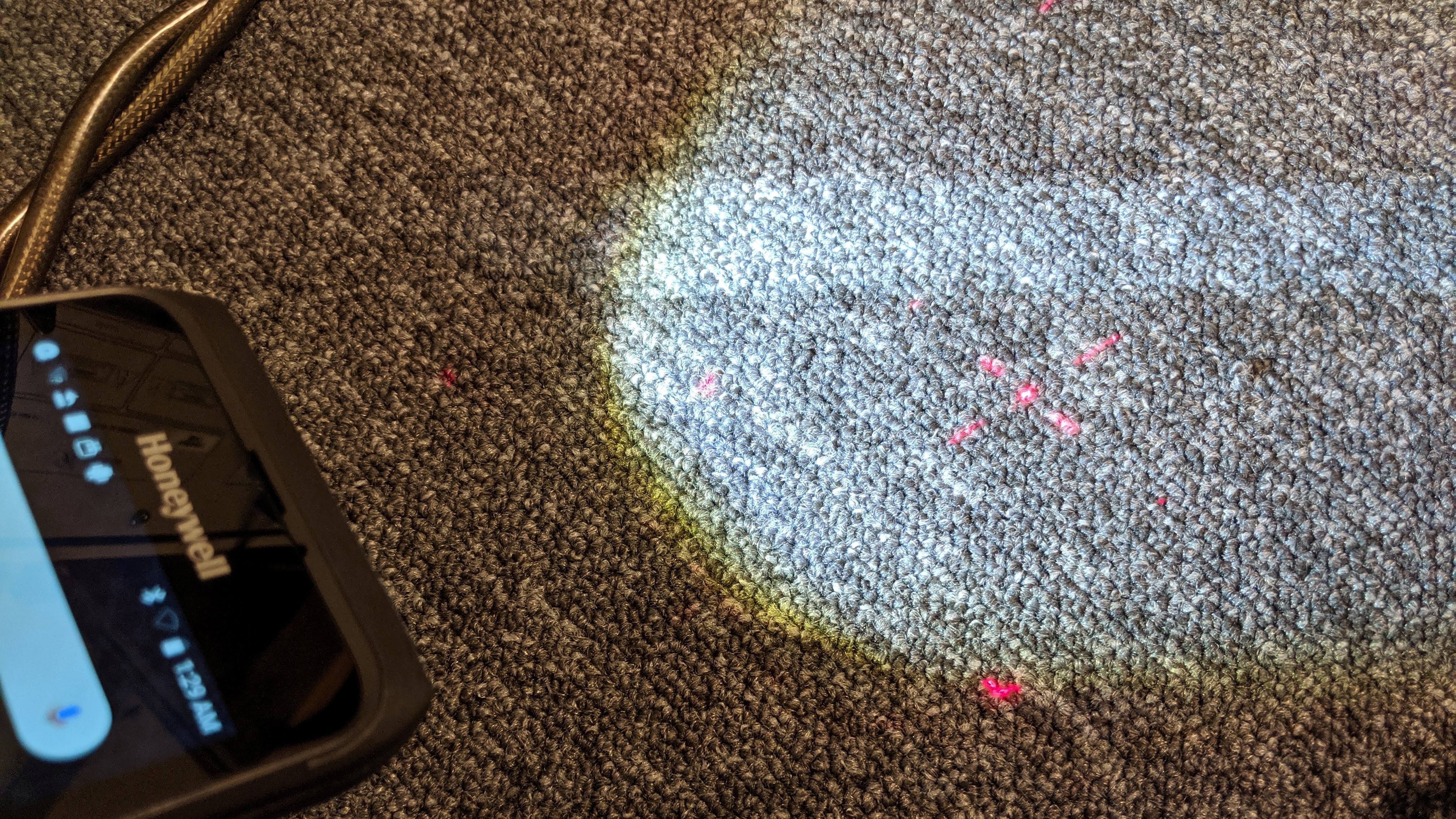
In use and performance
This is how the Dolphin CT40 performed in our suite of benchmark tests:
Geekbench: 1608 (single-core); 5777 (multi-core); 5620 (compute)
PCMark (Work 2.0): 6404
Passmark: 9031
Passmark CPU: 185103
Basemark: Did not run
Androbench (sequential): 284.73 (sequential read); 96.32 (sequential write)
Androbench (random): 62.64 (random read); 11.5 (random write)
3DMark Slingshot: 2080
3DMark Slingshot Extreme: 1370
3DMark IceStorm: 26130
HWBot Prime: 5377
Using a mainstream Qualcomm system-on-a-chip means that the CT40 performed well in our benchmarks. Not top of the class but good enough to exceed most of the Mediatek-based competitors that came through our doors over the past three years
The smartphone runs Android 8.1 with a security update dated May 2019. It has a stock user interface but is heavily customised underneath to accommodate the target audience. Honeywell has confirmed that the phone will be upgradable to Android 11 (i.e. Android R) via Honeywell’s Sentinel programme as part of its Mobility Edge platform that guarantees up to five generations worth of support (the original OS was Android 7).
The phone is validated by Android Enterprise Recommended, a Google-led initiative that aims to encourage Android adoption across businesses and enterprises. Surprisingly, the CT40 comes with a short warranty; only 12-months although that’s expandable.
Longer ones can be expensive: a CT40 Service Contract (must be purchased at time of mobile computer purchase.), with two-day turnaround and 5-Year term cost about half the price of the device itself.
As expected, there’s a number of applications and services either bundled with or running in the background. The latter set includes Autoinstall, License Observer, Scanner Edge and Provisioning. The former comprises of the Honeywell Device Discover app and a Wi-Fi Direct app.
Rivals to the CT40 includes the likes of the Zebra TC25 and the Cat S61.
Final verdict
The Dolphin CT40 is part of a recognised, well established brand of mobile devices; worth mentioning that there is a Wi-Fi-only version available to customers that want to minimise costs and reduce the probability of a privacy breach.
There’s a healthy amount of accessories already available; scan handle, quad-battery charger, vehicle dock and much more. Perhaps the most useful of them is a display dock which allows you to connect the phone to a display, similar to what Samsung does with DeX.
What separates it from the rest of the competition though is that it manages to hit the right balance of value for money, combining a decent set of hardware components with the promise to support the smartphone through five Android generations. Shame though that the default warranty stands at one year.
- Also check out our roundup of the best rugged smartphones of 2019

Désiré has been musing and writing about technology during a career spanning four decades. He dabbled in website builders and web hosting when DHTML and frames were in vogue and started narrating about the impact of technology on society just before the start of the Y2K hysteria at the turn of the last millennium.
